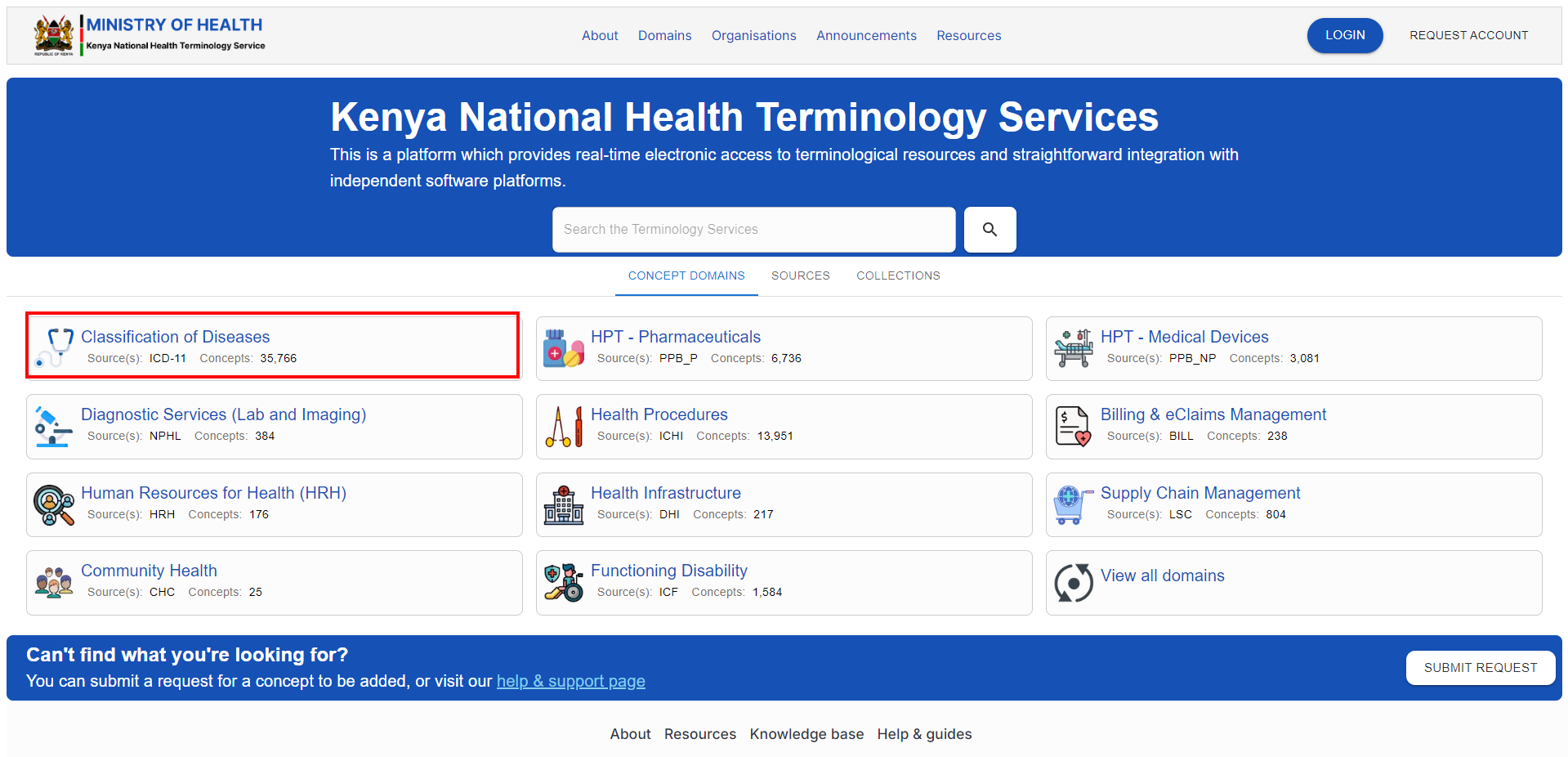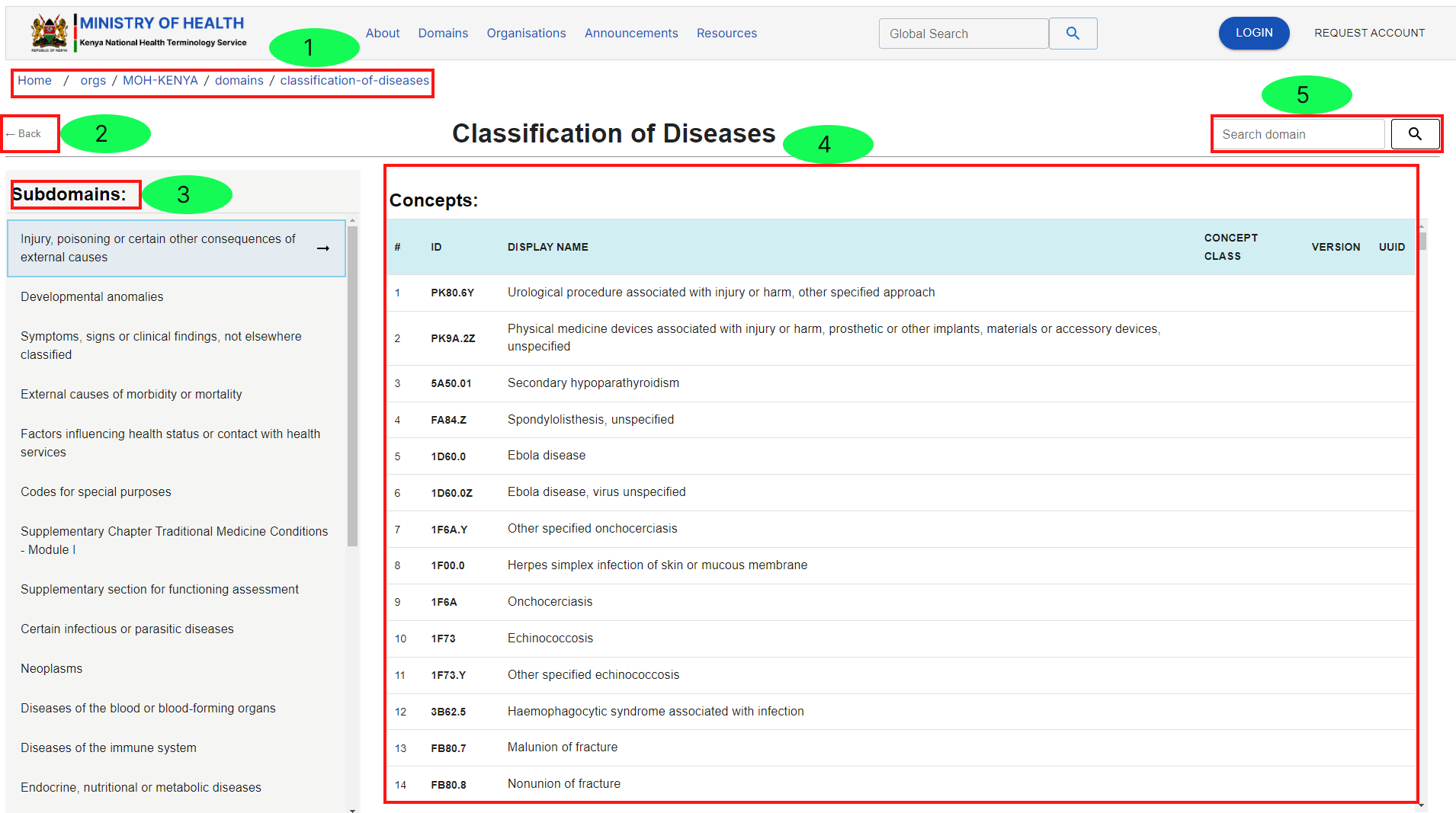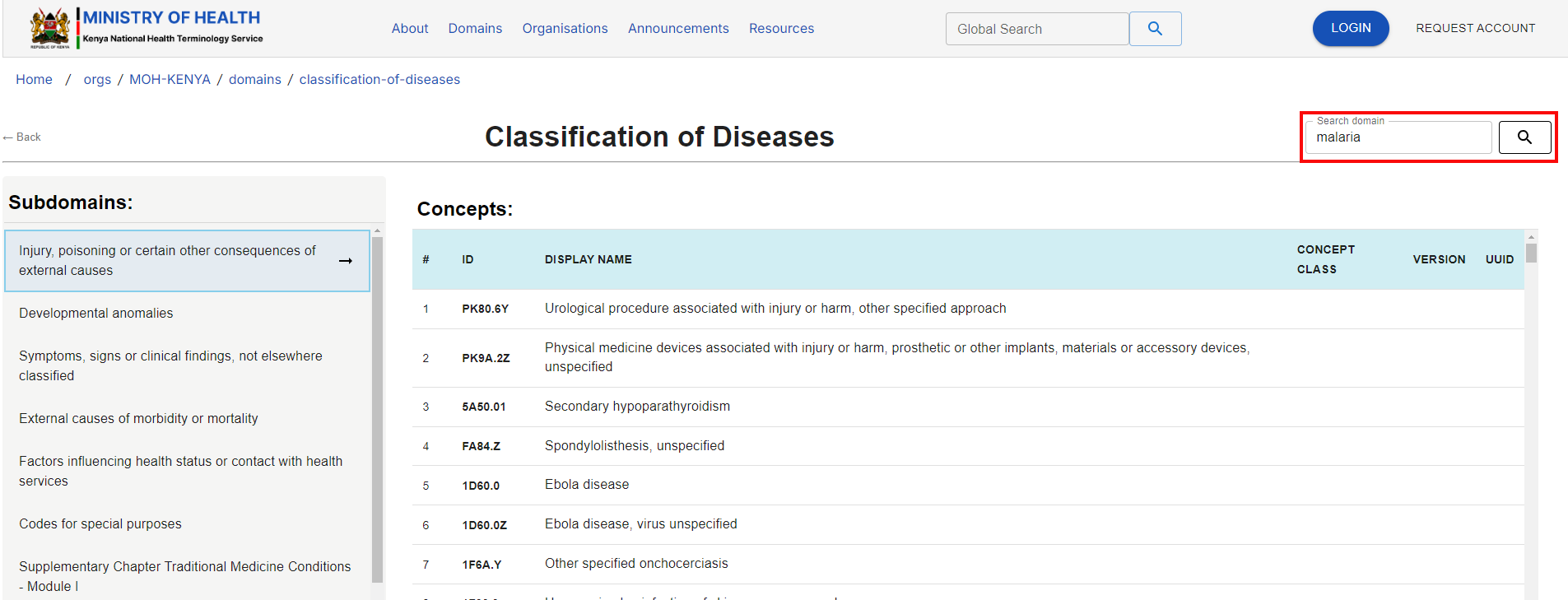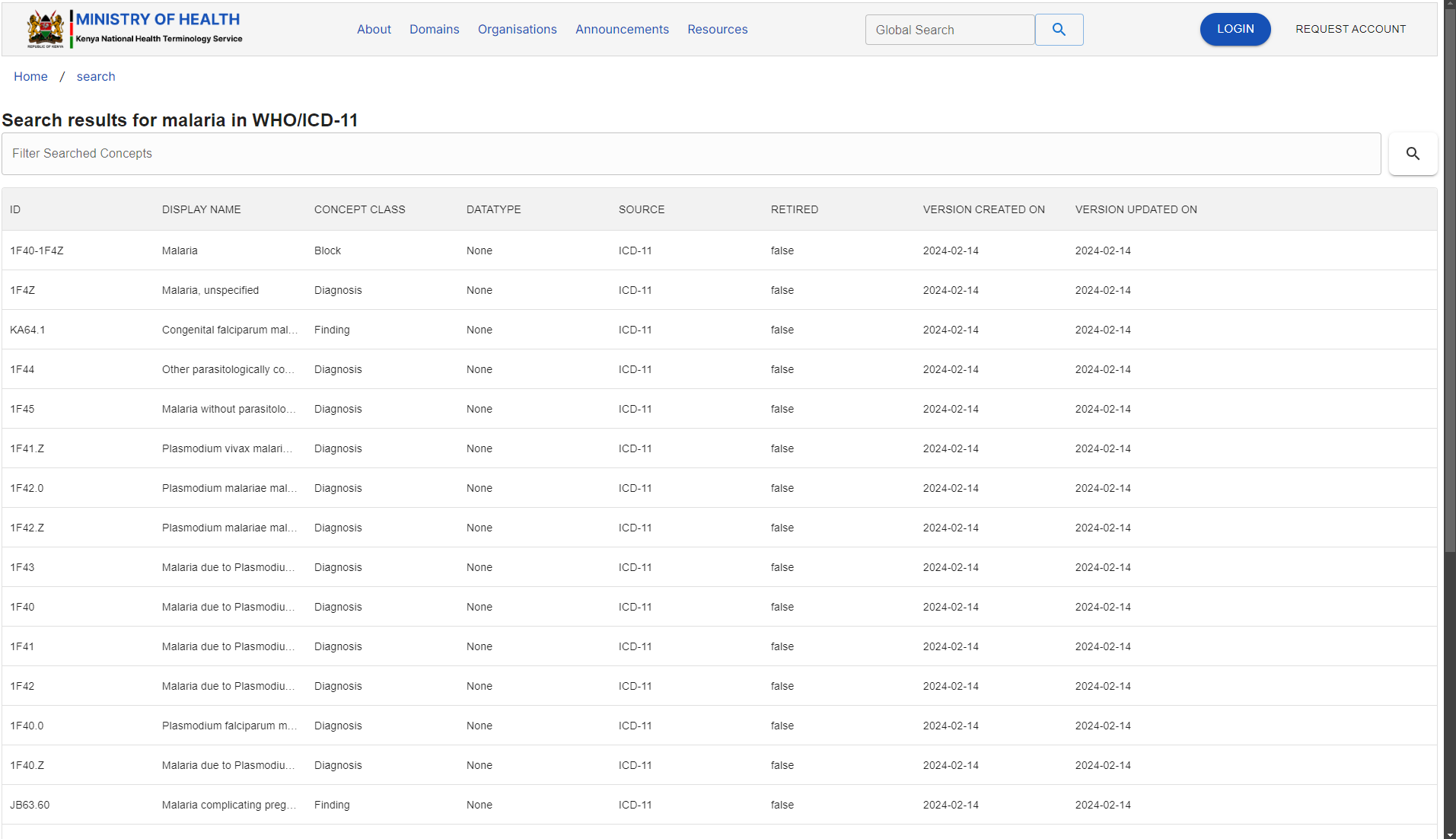Classification of Diseases
This domain focuses on organizing and categorizing various diseases and related health conditions into a structured system. It helps in the standardized classification of diseases, making it easier for healthcare providers, researchers, and health information systems to manage and use disease-related data consistently.
At the time of developing this, this domain had 35,766 concepts sourced from the International Classification of Disease 11th Revision - ICD11. This figure is prone to change since new concepts are regularly added and updated upon users' request. Refer to this page on how to request for concept addition
N/B: The process of navigating around a domain and viewing concepts is the same across all domains
Searching For Concepts
- Step 1- Search for a concept while anywhere within the TS
Use the Global search bar to search within the whole KNHTS.
Type your keywords in the Global Search field and click on the search link to search within the whole TS
- Step 2 - Search within a domain
Use the Search Bar within the opened domain to search for a concept attached to that domain
This type of search will only search what is within the visited domain
This search will return all concepts associated with our search keywords, in this case, 'malaria' as shown below.
The display table columns are described below.
- ID - <to confirm with amos the difference between UUID and ID>
- Display Name - Is the human-readable label or term used to represent a concept, term, or entity within KNHTS
- Concept Class - is a grouping or categorization of related concepts based on common characteristics or functions
- Data types - refer to the types of data that can be used to define the properties or attributes of concepts and other elements within the system. Datatypes specify the nature and format of data that can be associated with a concept, ensuring consistency and proper handling of information.
- Sources - Sources refer to the origins or authoritative references from which terms, definitions, and related metadata are derived, maintained, and managed. Refer to this page for more information
- Retired: refers to a concept that is no longer in active use or has been officially removed from the active terminology or classification system. This column returns the status of the concept e.g FALSE OR TRUE.
- Version Created On: refers to the timestamp or date when a specific version of a concept, or data set was created or released.
- Version Updated On: Refers to the date and time when a specific version of a concept, or dataset was last modified or revised. This timestamp indicates the most recent changes or updates made to that version.
Viewing concepts
Once your search results are returned after searching above, click on the entry that most suits what you were searching for
For example, clicking on the first entry in our example above redirects you to the page below.
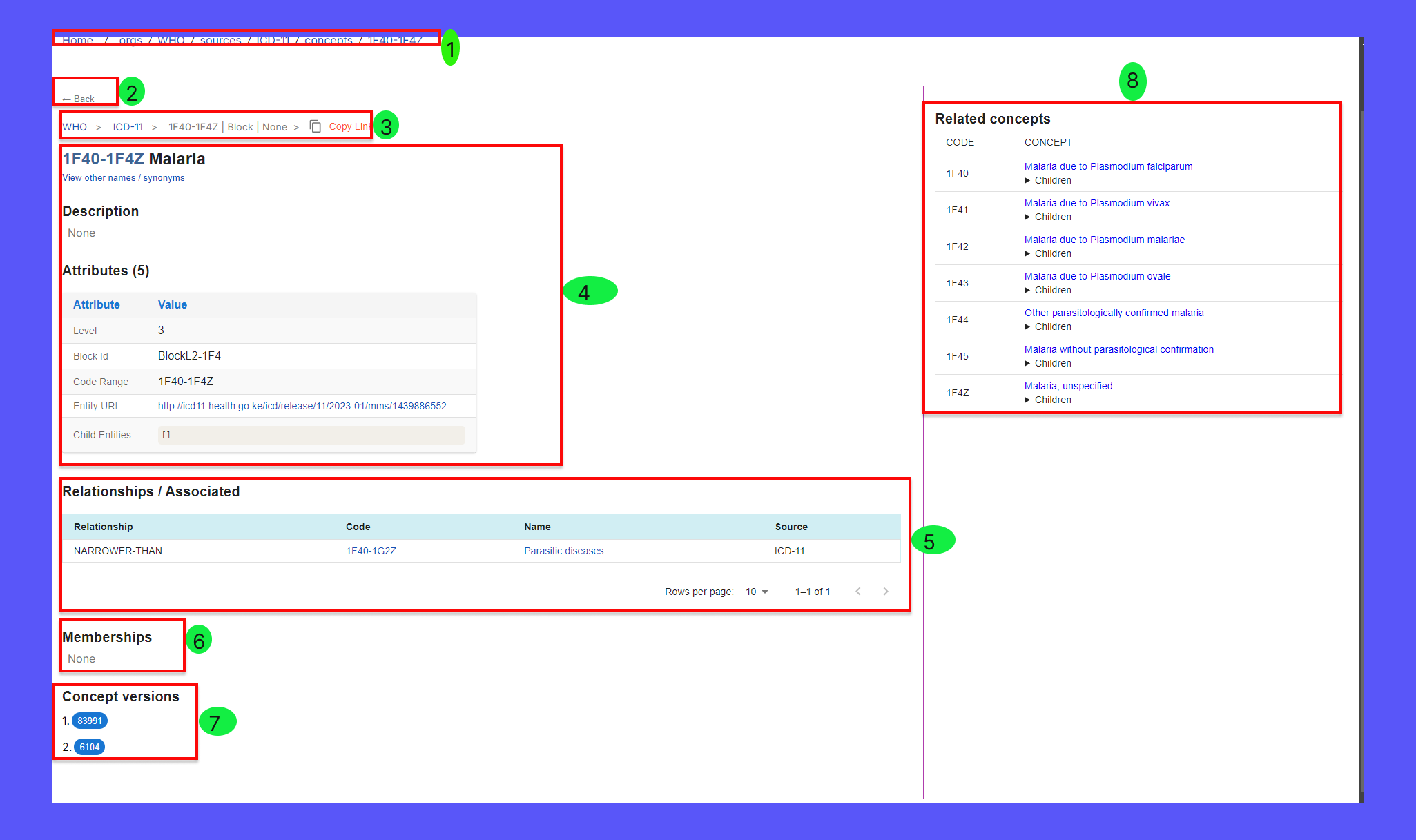
Creating and joining an organization
To join or create an organization, you need to log in with your registered account.
Organizations in KNHTS and any other Terminology Service are used to
- Manage terminology resources, such as concept dictionaries, classifications, and mappings. This includes overseeing the creation, update, and retirement of concepts within their domain.
- Collaborate with other entities, share terminology resources, and contribute to common terminology standards. This promotes interoperability and consistency across different systems and applications.
- Control access to terminology resources by defining user roles and permissions. This helps manage who can view, modify, or administer terminology data.
- Customize and localize terminologies to meet their specific needs or regional requirements. This includes adapting terminologies to reflect local practices, languages, or regulatory standards.
- Are responsible for ensuring that terminology resources adhere to governance, compliance, and quality standards. They oversee the accuracy and relevance of terminology data within their jurisdiction.
- Organizations engage with users and stakeholders to gather feedback, address issues, and make improvements to terminology resources. This ensures that terminologies meet the needs of their user base.
- Use terminology resources for integrating data from various sources and generating reports. This facilitates data analysis and decision-making based on standardized terminology.
<unable to demonstrate since i dont have access to a registered account>
Creating a collection
Downloading Concepts

